
SW20, South West Edinburgh 20 Minute Neighbourhoods, is a group of local people in Currie, Dreghorn/Oxgangs and Colinton who exchange ideas about how they can make their community better. As residents, parents and professionals from a wide range of backgrounds, they share an interest in aspiring to ‘live well locally’.
Earlier this month, the group posted a controversial and thought-provoking thread on the social-media platform X about the potential benefits, practicalities and problems which would attend introducing a two-ring traffic-congestion charge in Edinburgh.
Spurtle has no settled view on this topic, but we agree with SW20 that the issues raised are well worth debating in advance of local-government elections in 2027.
So, with SW20’s permission, we’ve transcribed its thread below. In the process, we’ve smoothed over a few grammatical and spelling potholes, put in some subheading and bullet-point signposts for clarity, and added the odd word here and there (indicated by square brackets). But what follows is essentially the same social-media thread with the prose style characteristic of the genre.
We know from experience back in 2005/06 how friendly discussion of congestion charges animates friends, lovers, families, neighbours and communities around the capital’s kitchen tables. So, if you’d prefer to retain the option of a sociable Christmas and non-custodial sentence, please feel free to email us your comments at: spurtle@hotmail.co.uk. We’ll add publishable messages at the foot of this page and here.
*****
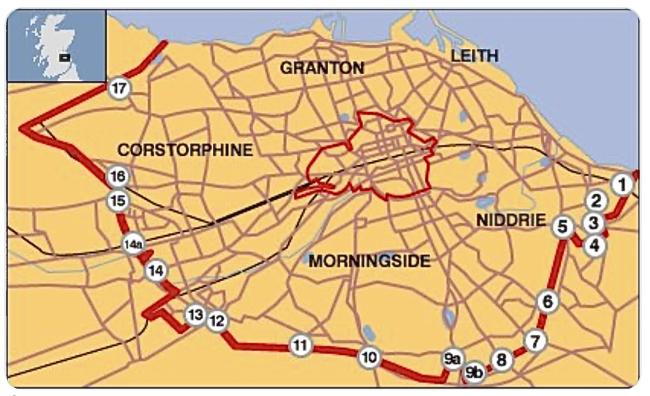
It's time for an Edinburgh congestion charge. Here's why.
The planned 2006 £2/day charge to pass one of the boundaries would have raised £50m a year had it been introduced. By now, the city might have raised an extra £850m to spend on public transport. Possibly above a billion if adjusted for inflation.
Almost two decades later, Edinburgh has ambitious car km reduction targets backed (in principle, although sadly not in practice) by 4/5 Council parties. But without measures like a congestion charge to both cut traffic AND raise funds for public transport, those will be missed.

There is huge [population] expansion across the Lothians [Winchburgh, Prestonpans, West Town] – if everyone new drives, everyone loses (including drivers). There’s now a policy Mexican stand-off [as we wait] for public transport to magically improve. But, ironically, we're not going ahead with implementing behavioural-change projects (such as a congestion charge or workplace parking levy) that [would] make those improvements easier to fund and deliver!
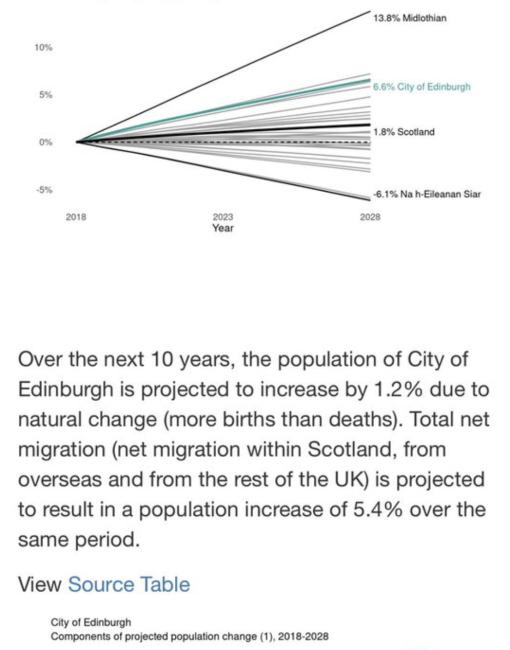
Worse: parties blame someone else for lack of funding rather than using options open to them to create funding for things locally (all governments do it), leading to inaction. Plus the issue of those above you wanting you not to rock the boat (SNP/Lab) lest you want a promotion.
So it’s time to get a congestion charge back on the agenda ahead of Council elections in 2027. Can we change the question from How many cars can we move? to How many people can we move?
But the original scheme needs adapting for the 2020s. How?
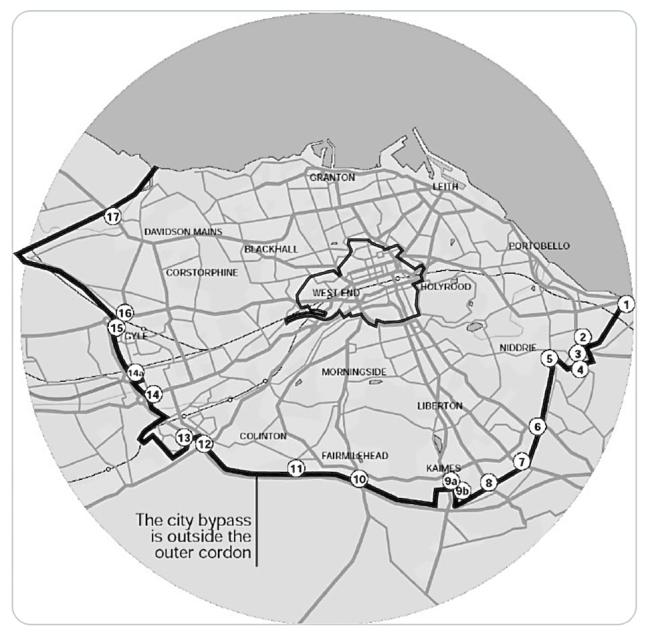
How you might soften it
Council residents to be exempt from crossing the outer boundary once per day (e.g. Queensferry, Kirkliston, Currie and Balerno residents).
Perhaps for postcodes within 2 miles of the boundary, your first trip across the outer ring might be free each day.
Make it free or heavily discounted for fully electric vehicles.
Delivery hubs to transfer to small last-mile vehicles.
As per the orginal scheme, blue-badge holders should be exempt.
All City Centre residents (within the inner boundary) exempt from inner boundary charges. Perhaps zero-emissions vehicle owners, too (although London has just removed this).
Discounts for non-Edinburgh EH-postcode businesses or bulk-buy discounts.
How you might harden it
Make the inner boundary significantly more expensive for most. Outer = low emissions, Inner = ultra or no emissions.
£2 flat fee is unfair. Have charge multipliers on emissions, mass (road wear) and pedestrian safety (see below).
Combine with a circulation plan – it was the original plan to close off rat-runs.
Apply it to buses to incentivise investment.
Charge every time it’s crossed, not just daily – maybe capped?
Vary the price for peaks.
Make it 24/7.
Increase it in line with inflation every year, ideally more.
Historic vehicles to also be covered.
What could the price be?
In 2006, it was planned as a flat rate: £2. That would be roughly £3.30 now.
But cars (like people) have got bigger since 2006, especially electric ones. Also, some vehicles are much less polluting. So it’s important to recognise this in the charges.

We know the cost of a bus fare has risen much more than inflation. So have rail fares. [So the charge] needs to be at least as expensive as a bus day ticket – ideally more – to change behaviours.
If you drive a small, efficient and safe vehicle then you pay less. Or perhaps even nothing for crossing into the charge zone for the first time each day? Or nothing at all?

But to make it fair and to incentivise the right behaviours, there can be multipliers based on vehicle mass, size and pedestrian safety rating as well as emissions. Drive a big, heavy, polluting car with a bad pedestrian safety rating? Fine, but you’ll pay for all the externalities. In London, it’s £15, but with additional charges if your vehicle isn’t ULEZ compliant. This seems to have driven many more vehicles to be converted to electric, much more quickly.
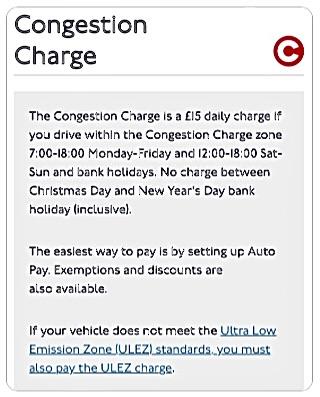
What about the politics?
An Edinburgh Labour Party up in the polls might say it wants to make the city much more equal, healthy and safe, and say that it wants to fund public transport. Rather than burning political capital on wee low-traffic neighbourhoods and fighting bike lane by bike lane, why not do something big instead?
If parties start thinking now about Council elections in 2027, they can put it on manifestos and stand on them. Then implement when they get into office.
Political will probably won’t be there, despite worldwide evidence that politicians who invest in city sustainability are rewarded at the ballot box.
How long can a scheme that incentivises the right behaviours, raises funds AND helps deliver on stated policy be ignored?
Edinburgh will be left behind without significant investment in public and active travel. And to make that public and actrive travel as efficient as possible and to create safe, walkable and well connected places to live, work and play, it needs both funding and space.
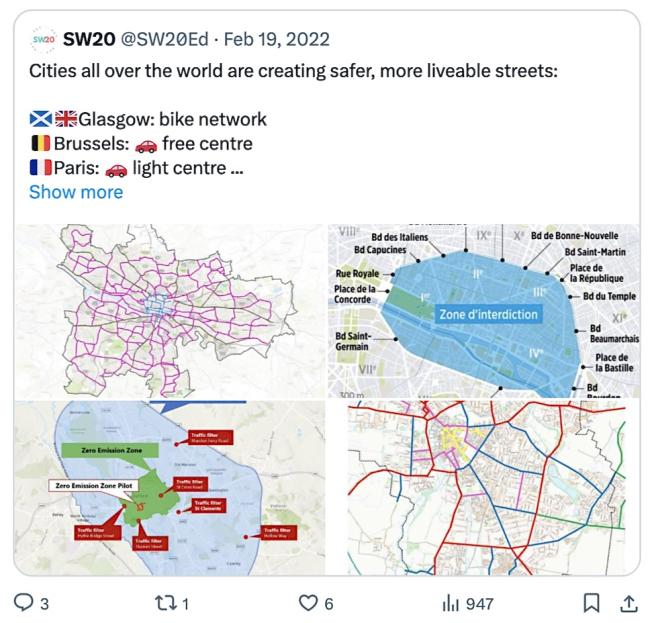
To add your comments to this page, please email us at spurtle@hotmail.co.uk. To read more from SW20, follow them on X at @SW20Ed or visit their Facebook page here.
-----
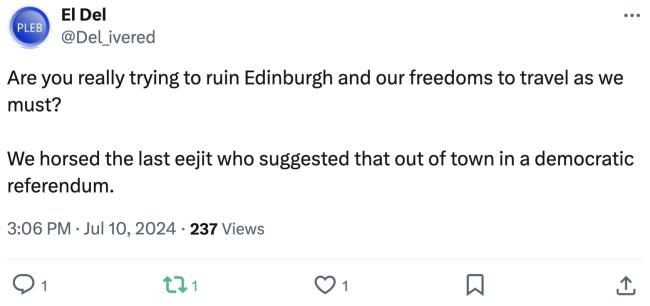
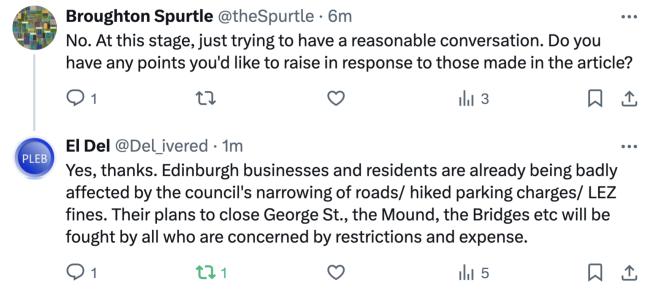


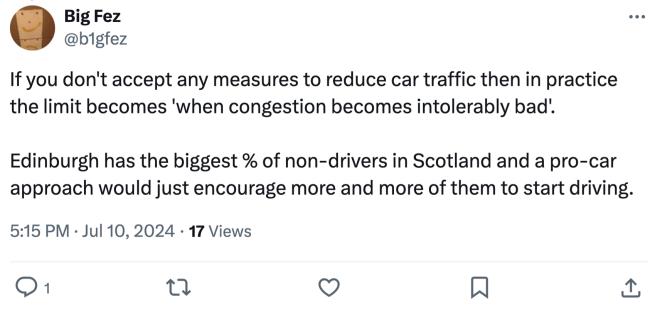
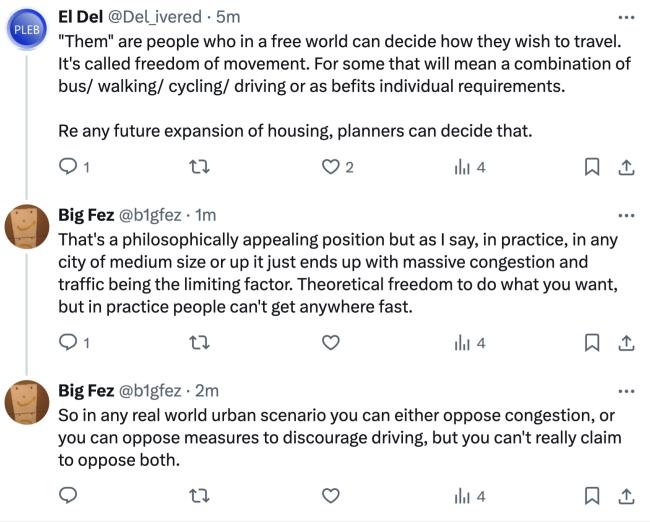










Comments thread continues HERE.